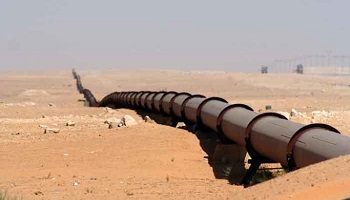Chief investment officers are calling on fixed income investors to keep a watchful eye as events unfold while others contemplate a delay to the huge Aramco IPO. Read on to see what they all have to say.
Mazars: “Fixed income investors should remain vigilant”
George Lagarias, chief economist at Mazars, said the surge in oil price has effectively wiped out the world’s spare capacity.
“A higher geopolitical premium on oil is business as usual for a strategic as opposed to a financial asset. Inflation is very tame across the board, despite significant easing, so higher oil prices may only create temporary inflation pressures.
“Despite possible knee-jerk reactions from bonds and futures markets, we don’t anticipate this issue to change the dovish direction of central banks.
“Bond prices, on the other hand, are at historically high levels and bond traders, who don’t want to be locked in low yields for a long time are looking for an excuse to take profits off the table.
“Fundamentally, this event alone would not usually move fixed income. But at current valuation levels, bond markets are very sensitive and thus fixed income investors should remain vigilant.
Carmignac: “Higher vulnerability of Saudi supply”
Didier Saint Georges, member of the Investment Committee, Carmignac, said:
“The availability of US strategic reserves is such that short term risk to supply should probably not be overestimated (although we’ll know better in the next 48 hours how lasting the disruption to supply might last).
“It is difficult to make sense of this event in the context of the apparent diplomatic progress made of the past few weeks between the US and Iran. Certainly a new headache for the Trump Administration.
“The most immediate read-across of this event is the likely perception of a higher vulnerability of Saudi supply, and the heightening of political risk in the middle-East. This does not bode well for global consumer confidence, and if oil prices were to suffer a lasting ‘risk-premium’, for consumers’ purchasing power.
“It matters to the global economic cycle, as consumer spending from Europe to the US had so far demonstrated considerable resilience to the much weakening manufacturing sector. A reminder that central banks to not hold the key to all economic risks.”
DWS Group: “Might dent investors’ risk appetite”
In DWS Group’s CIO Flash, the headline was ‘Don’t underestimate the threats to global oil supply’.
“A drone attack took out half of Saudi oil supply. Much of this looks set to be restored swiftly. The attack nevertheless highlights geopolitical threats to the world economy.
Its expectations in a nutshell were:
In one of the biggest disruptions to oil supply, about 5% of global production was taken off the market.
With sufficient oil stockpiles available and damage repair making progress, no supply shortage is expected.
This incident, however, might dent investors’ risk appetite, as it shows the fragility of vital energy infrastructure and reminds investors of how easy base scenarios can potentially be derailed.
Royal London Asset Management: “Logical that Aramco’s IPO will be delayed”
Piers Hillier, chief investment officer at Royal London Asset Management, said:
“Recent market movements – oil related commodities and securities up, bond yields and industrials lower – seem rational. Investors will now be closely monitoring the response to the attack.
“Oil futures curves for 3-10 years out have moved up about $1.25 from around the $50 mark. So while the spot market has jumped, reflecting near-term impacts on immediate oil availability and supply chain issues, the longer-term price has taken this in its stride, up 2-3%, with a modest bump up in prices, leading to an uptick in oil stocks or around 3-4%.
“It would seem logical that Aramco’s IPO will be delayed while the damage is assessed but beyond this we would expect that the risk premium that investors will require should the IPO go ahead will now be higher.”
Amundi: “India and Turkey stand to be the biggest losers”
Yerlan Syzdykov, Amundi’s head of emerging markets team, said:
“It is still very early to quantify the full effect of the supply disruption on global markets, however, the preliminary effect seems to be material and initial hopes of restoring production levels quickly have been put in doubt by the latest (unofficial) communication from Aramco and Saudi officials.
“It seems that we could only count on a limited restoration within the next few weeks and full restoration could take up to several months.
Impact on Aramco IPO
“The domestic listing was supposed to happen as early as November and a lot of local investors were the sellers of other stocks in order to make room in anticipation of the upcoming share placement. It is unlikely for the listing to take place as early now, and this could force domestic investors to go back into the stocks they were switching out of for the last few weeks (financial and consumer sectors).”
Impact on Aramco credit
“The spread widening on Monday was only 15bps and is similar to the one for sovereign, reflecting probability of a one-notch downgrade for both based on uncertainty of production restoration timing (and its cost). however, it is unlikely for the rating agencies to follow the market’s assessment. Given Aramco’s and sovereign’s cushion in credit ratings terms, the spread is likely to come back in the short to medium term, provided security concerns subside.”
Impact on Security Risk
“The increasing security risk premium does not only apply to Saudi assets but to other GCC countries as well. The most affected country could be UAE (part of war coalition in Yemen, and, therefore, potential target for Houthies).
Increasing Risk Premium caused by oil spike
“The aggregate impact of higher oil is normally negative on the EM equities, whereas it is neutral to positive for the EM Fixed Income.
“This is of course a function of the response of the Saudi and the US to the alleged involvement of Iran in the attack. Given a direct threat of high oil prices to global growth, we think it is unlikely to see a direct military response by the US against Iran.
“European assets are more at risk of correction compared to the US. In EM context the highest risk premium is in Asia.
“In country specific vulnerability terms, India and Turkey stand to be the biggest losers given how high the oil dependence. Russia and Nigeria are the biggest beneficiaries.”
Kingwood: “Limited impact on markets”
Rupert Thompson, head of research at Kingswood, said: “Oil prices have bounced 10-15% on the back of the attack by Iran-backed Hutu rebels on Saudi oil infrastructure which may cut global oil supply by as much as 5%.
“Even so, the larger impact on markets should be limited unless this heralds a major step-up in background hostilities between Iran and the US/Saudi.
“Before the attack, all the talk was of looming over-supply of oil and the risk of a major price hike looks limited as US shale output would be stepped up in response.
“Even after its jump, the Brent oil price at $66/bbl is only back close to the middle of the last year’s trading range.”
Capital Economics: “Three scenarios including full-blown crisis”
“The attack on Saudi oil is unlikely to be a disaster for the global economy. Saudi production might resume quite quickly and even if it doesn’t, the implications for oil prices and developed economy inflation should be limited.
“But growing tensions in the Middle East are another headwind for the global economy in already uncertain times, and a full-blown conflict could trigger another leg in the global downturn.
“The attacks over the weekend on a Saudi oil processing centre knocked out at least half of the kingdom’s supply and initially saw the oil price jump to $72 per barrel. The outlook for oil prices is now highly uncertain, but we have outlined three potential scenarios in our latest Energy Update.
“First, and we think most likely, the cut-off might prove to be mainly precautionary and Saudi supply could resume fairly quickly. In this event, we would see the price of Brent crude falling back in line with our previous forecasts of $60pb by year-end, $65 by the end of 2020 and $68 at end-2021.
“Second, there could be an extended outage and a persistent threat of further attacks. The associated supply constraints and higher risk premium could drive the oil price up to about $85pb this year, where it might remain.
The third scenario is a full-blown US-Iran conflict, which we argued in a recent Energy Focus could cause the oil price to rise to $150pb this year. But we would then see it falling back to around $80pb in 2020 and $60 in 2021 as other producers increased their supply.
“This last scenario is still not our base case, but with President Trump claiming that the US is “locked and loaded”, the risks have increased.”










